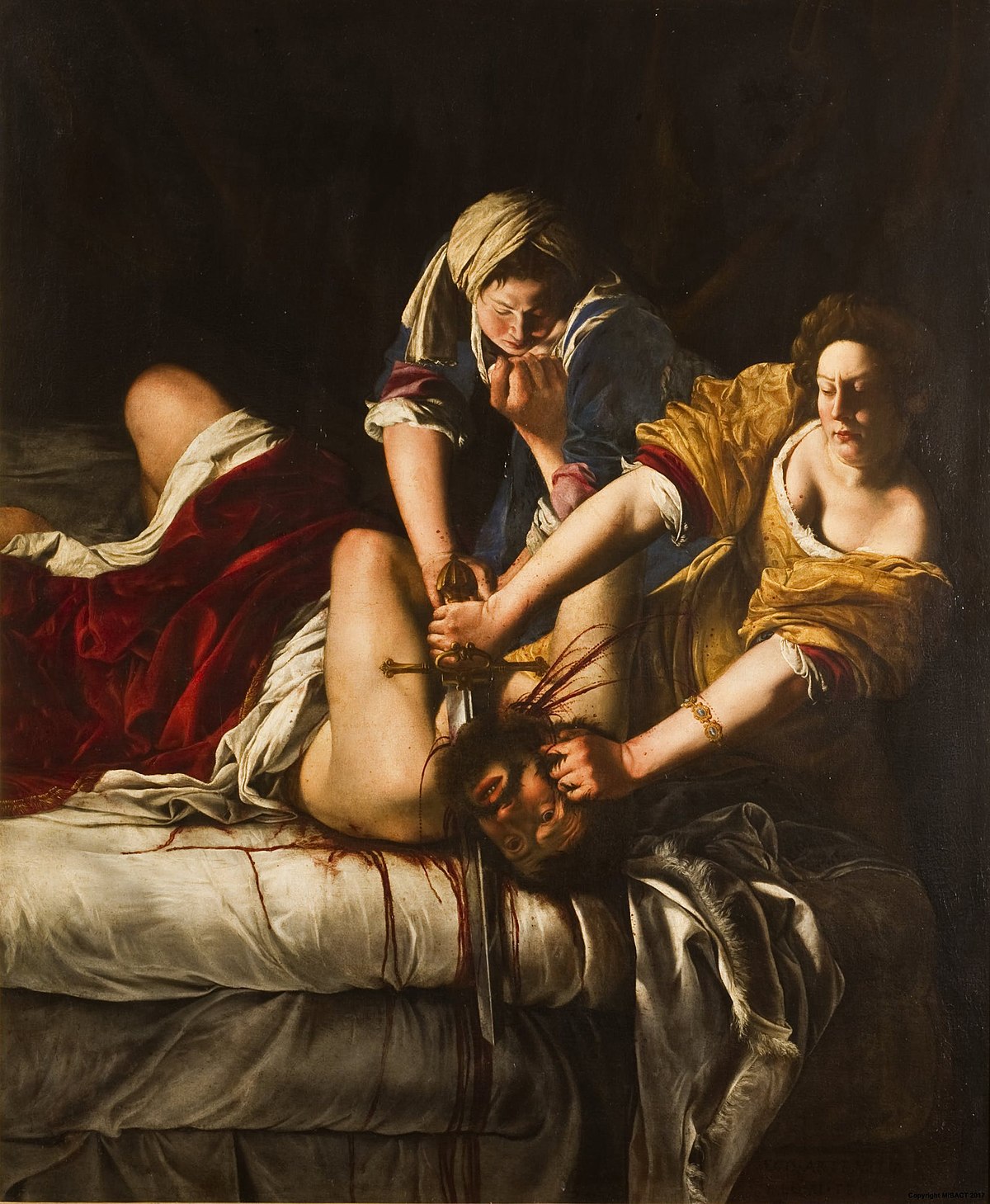Two women pin a man down, one by the torso and one by the head. Bloody rivulets spurt down the white sheets, and the wide-eyed victim is vividly conscious of his own suffering. Gentileschi studied with Caravaggio, and the relentless physicality and unflinching realism of the moment – the struggling man, the forceful, implacable women – is emblematic of the theatricality of baroque painting. So far, so typical. But this is more than a painting. Gentileschi deserves to be one of the most famous painters in history: she accomplished something almost impossible, in becoming a successful artist when no women were admitted to the institutions of influence. Even more than that, perhaps, she put her life into her art in the most radical way. This is a biblical image, but also autobiographical: she was raped, aged 18, and many of her own images are concerned with righting this wrong, with reclaiming the narrative of her life. See how there are two women here; Caravaggio’s version of the same incident is cool, but has only one woman and a decrepit male attendant. She offers a vision of female solidarity – sisters doing it for themselves – of revolution against the brutal injustices and power structures she suffered. Like Kahlo, or even Tracey Emin, centuries later, she uses her art to rewrite history, to remake her own image, to become the hero of her own life.

 The Bride of the Wind – Oskar Kokoschka
The Bride of the Wind – Oskar Kokoschka